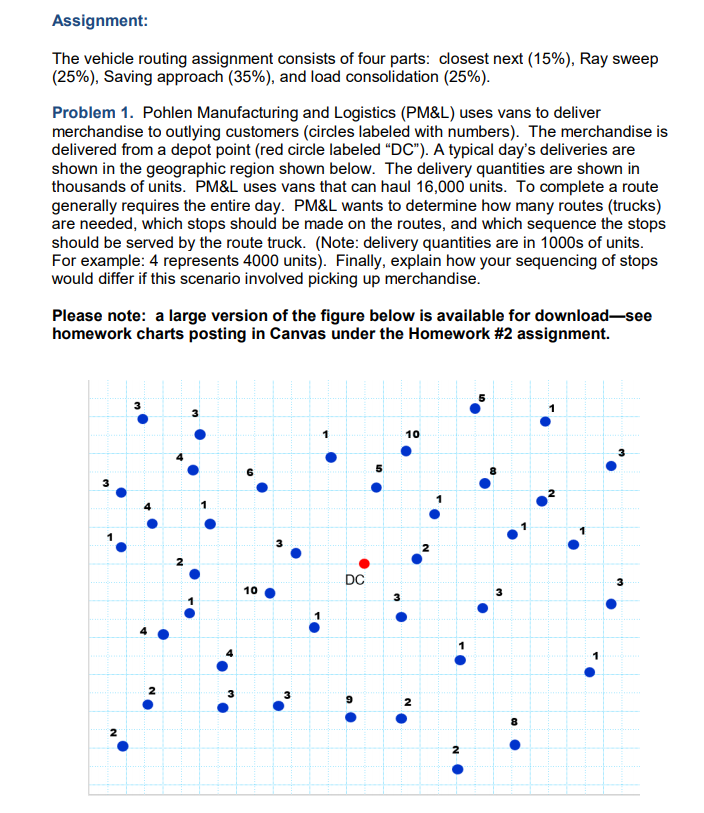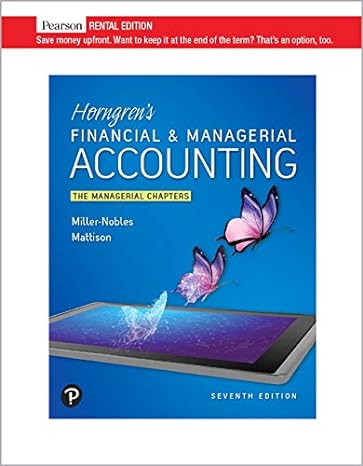
Assignment: The vehicle routing assignment consists of four parts: closest next (15%), Ray sweep (25%), Saving approach (35%), and load consolidation (25%). Problem 1. Pohlen Manufacturing and Logistics (PM&L) uses vans to deliver merchandise to outlying customers (circles labeled with numbers). The merchandise is delivered from a depot point (red circle labeled DC"). A typical day's deliveries are shown in the geographic region shown below. The delivery quantities are shown in thousands of units. PM&L uses vans that can haul 16,000 units. To complete a route generally requires the entire day. PM&L wants to determine how many routes (trucks) are needed, which stops should be made on the routes, and which sequence the stops should be served by the route truck. (Note: delivery quantities are in 1000s of units. For example: 4 represents 4000 units). Finally, explain how your sequencing of stops would differ if this scenario involved picking up merchandise. Please note: a large version of the figure below is available for downloadsee homework charts posting in Canvas under the Homework #2 assignment. 10 3 2 DC 10 3 3 . 2 NO 3 2 2 NC Assignment: The vehicle routing assignment consists of four parts: closest next (15%), Ray sweep (25%), Saving approach (35%), and load consolidation (25%). Problem 1. Pohlen Manufacturing and Logistics (PM&L) uses vans to deliver merchandise to outlying customers (circles labeled with numbers). The merchandise is delivered from a depot point (red circle labeled DC"). A typical day's deliveries are shown in the geographic region shown below. The delivery quantities are shown in thousands of units. PM&L uses vans that can haul 16,000 units. To complete a route generally requires the entire day. PM&L wants to determine how many routes (trucks) are needed, which stops should be made on the routes, and which sequence the stops should be served by the route truck. (Note: delivery quantities are in 1000s of units. For example: 4 represents 4000 units). Finally, explain how your sequencing of stops would differ if this scenario involved picking up merchandise. Please note: a large version of the figure below is available for downloadsee homework charts posting in Canvas under the Homework #2 assignment. 10 3 2 DC 10 3 3 . 2 NO 3 2 2 NC







